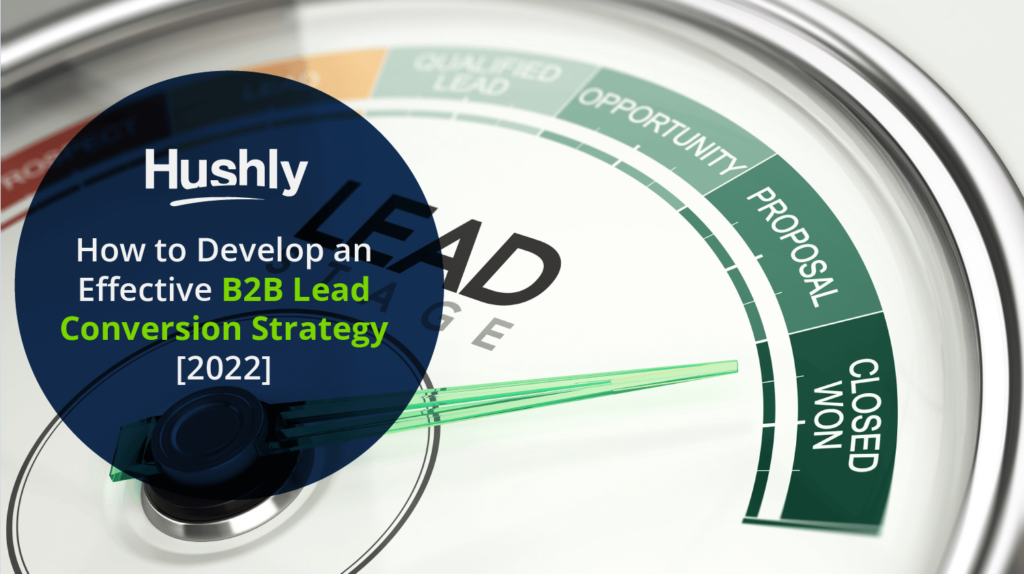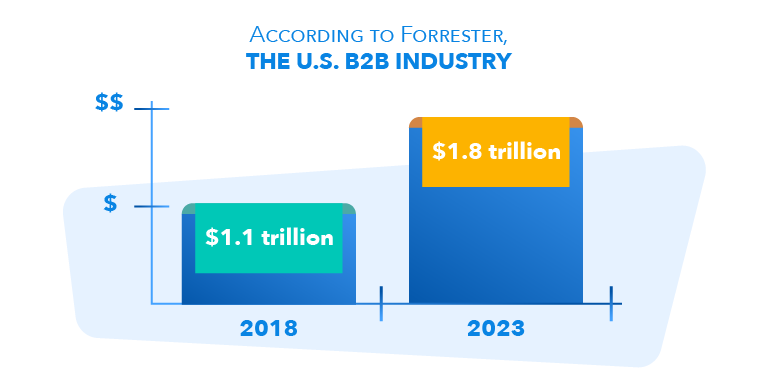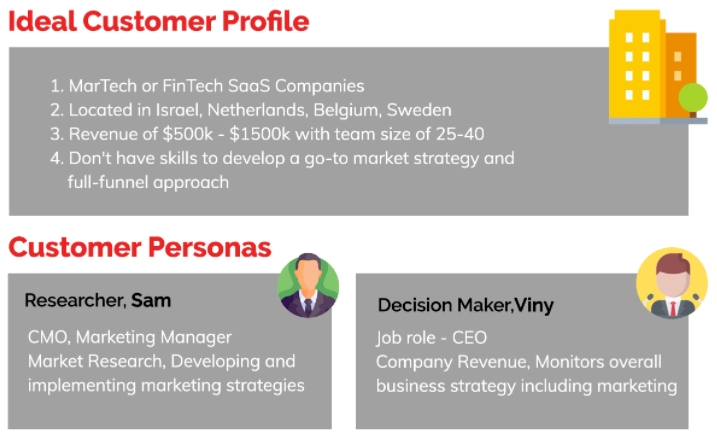Filters
Content Type
Topic
How to Develop an Effective B2B Lead Conversion Strategy [2022]
A successful lead conversion strategy is the cornerstone of any B2B business. It’s how you get new customers and turn them into loyal ones. Creating and executing a conversion strategy isn’t necessarily easy. It requires time, knowledge, and the right resources. Without a plan, you cannot expect to optimize your lead generation efforts and close more sales.
That is why it is so important to invest in a lead conversion strategy tailored to your business’s needs so that you can reap the maximum benefits from every lead that comes through your funnel.

The B2B Stratosphere is Growing Rapidly
The B2B space is growing at a rapid pace. Studies from Forrester show that the U.S. B2B industry was worth approximately 1.1 trillion in 2018 and is expected to grow to nearly $1.8 trillion by 2023.

Source: Albacross
This is excellent news for B2B companies. The higher demand for B2B products and services means a larger potential customer pool. The only problem is that the B2B space is also rife with competition. With so many companies vying for the same customers, it’s critical to have a well-thought-out lead conversion strategy to ensure that you optimize your efforts and close more sales.
10 Steps Needed for an Effective B2B Lead Conversion Strategy
Developing an effective lead conversion strategy is a complex undertaking. It requires a thorough understanding of the current marketing and sales process, a keen eye for potential opportunities to improve, and a firm grasp of implementing best practices. It also requires a significant amount of time and research.
The good news? With a strong strategy at the ready, your conversion rate could be significantly boosted. Not sure where to begin? Here are 10 steps to creating a potent B2B lead conversion strategy that will help you capitalize on every lead that comes through your funnel:
1. Identify and Outline Your Sales Goals
Before you can start helping others reach their business goals, you need to take the time to define your own sales goals. Your goals will vary depending on the size and scope of your business, but they should be quantifiable and measurable.
What are the specific numbers you want to meet each month or quarter?
What do you want to accomplish in the next year?
The more specific you can be, the better.
2. Know Your Market
Understanding your market and the changing dynamics of your industry is one of the most important things you can do to create an effective B2B lead conversion strategy.
The more you understand your target market, the better you will be able to tailor your message to fit their needs and preferences. This will help you to minimize the time and effort required to generate quality leads while maximizing the chances of closing sales.
3. Identify Your Unique Selling Proposition
Your unique selling proposition is the most important thing you can do to differentiate your business from the pack. It’s what makes you unique and sets you apart from your competitors. Without a robust and unique selling proposition, it’s virtually impossible to stand out in a crowded marketplace and achieve real success.
Your unique selling proposition helps your target market understand why they should do business with you instead of your competitors. It allows you to showcase the value you bring to the table so that customers know exactly what they’re getting when they do business with you.
4. Create Ideal Client Personas
Your unique selling proposition is only as good as the personas you develop to represent your ideal clients. An ideal client persona is a fictional representation of a single type of customer you want to do business with. It’s a snapshot of their needs, desires, and motivations that you can use to tailor your messaging and sales process to optimize your results.
These personas will help you get inside the head of your customers to anticipate their needs and respond more effectively.

Source: Rahulogy
If you’re not sure where to start, the best place to look is at your current clients. What are their demographics and backgrounds? What are their goals and motivations? What are they looking for in a solution? By digging deep and understanding what makes your current customers tick, you can create a set of personas that will help you build a better sales process.
5. Identify Needs
Once you’ve identified the characteristics of your ideal client, you’re ready to move on to the next step – identifying their unique needs. While your customers will share common characteristics and needs, no two customer accounts will be precisely the same.
Your customers will have different priorities and expectations, so your solutions will also need to be tailored to their unique needs. This will require a bit of creativity and innovation, but it will be worth it in the long run.
6. Formulate a Solution for Specific Needs
With your customers’ needs in mind, you are ready to develop a solution that addresses those needs. The best way to do this is to identify their pain points then brainstorm potential solutions.
With more B2B teams working with accounts as a verse to individual buyers, you must take the time to formulate various solutions and ways to present them so that you always have the correct information when addressing different members of an account.
7. Present the Right Solution to the Right Person
You’ve identified your customers’ needs; now it’s time to present the solution that meets those needs in the best possible way. Your solution will likely be a combination of content and interactions designed to help your customers discover the value that you can deliver.
For example, while an initiator within an account will be interested in learning about the basics and how you can address the needs of their company, the final decision-maker will likely be more interested in the proof you have to offer that your solution is going to do what you say it will.
8. Build Trust and Remove as Many Friction Points as Possible
If you want to create a seamless lead conversion strategy, you need to remove as many friction points as possible. This means finding ways to provide content in convenient formats for your customers and making it easy for them to interact with you when they have questions or want to learn more.
Your customers don’t want to be marketed to all day long. Instead, they want to work with businesses committed to providing a high-quality experience and addressing their needs in the best possible way.
9. Identify Your Ideal Key Performance Indicators
With online traffic up, it’s more important than ever to measure the right key performance indicators (KPIs) for your business and goals. While the most common KPI that sales teams use to track success is conversion rate, other KPIs can help you optimize your results, such as net promoter scores, customer lifetime value, etc.
10. Monitor and Adjust as Needed
Sales teams focused on developing a lead conversion strategy understand the importance of monitoring KPIs and adjusting as needed. This means that you need to test different designs and make changes as you learn more about what works and what doesn’t.
Improve your Lead Conversion Strategy with the Right Sales Enablement Tools
One of the biggest challenges sales teams face today is ensuring that their lead conversion strategy is optimized for the current online environment. As online traffic continues to grow, it’s more important than ever to ensure that you’re using the right sales enablement tools to monitor and optimize your results.
Need help with your lead conversions? Contact Hushly today to see how we can help!
The post How to Develop an Effective B2B Lead Conversion Strategy [2022] appeared first on Hushly.



